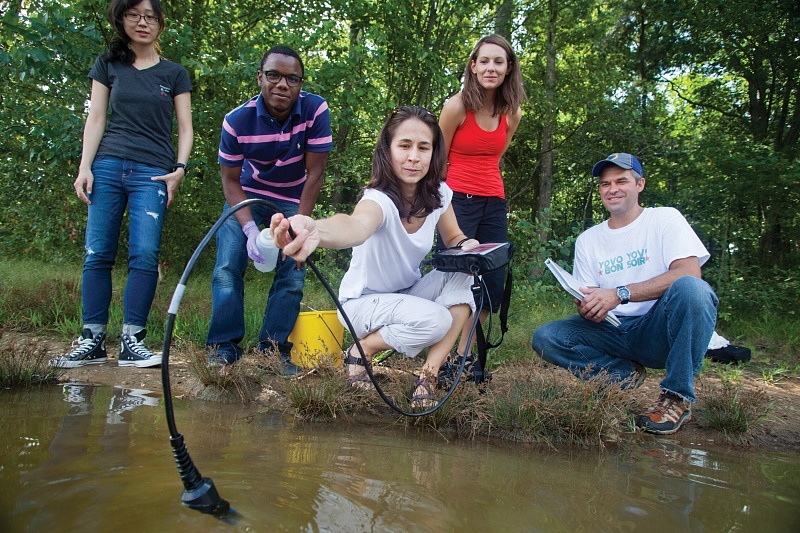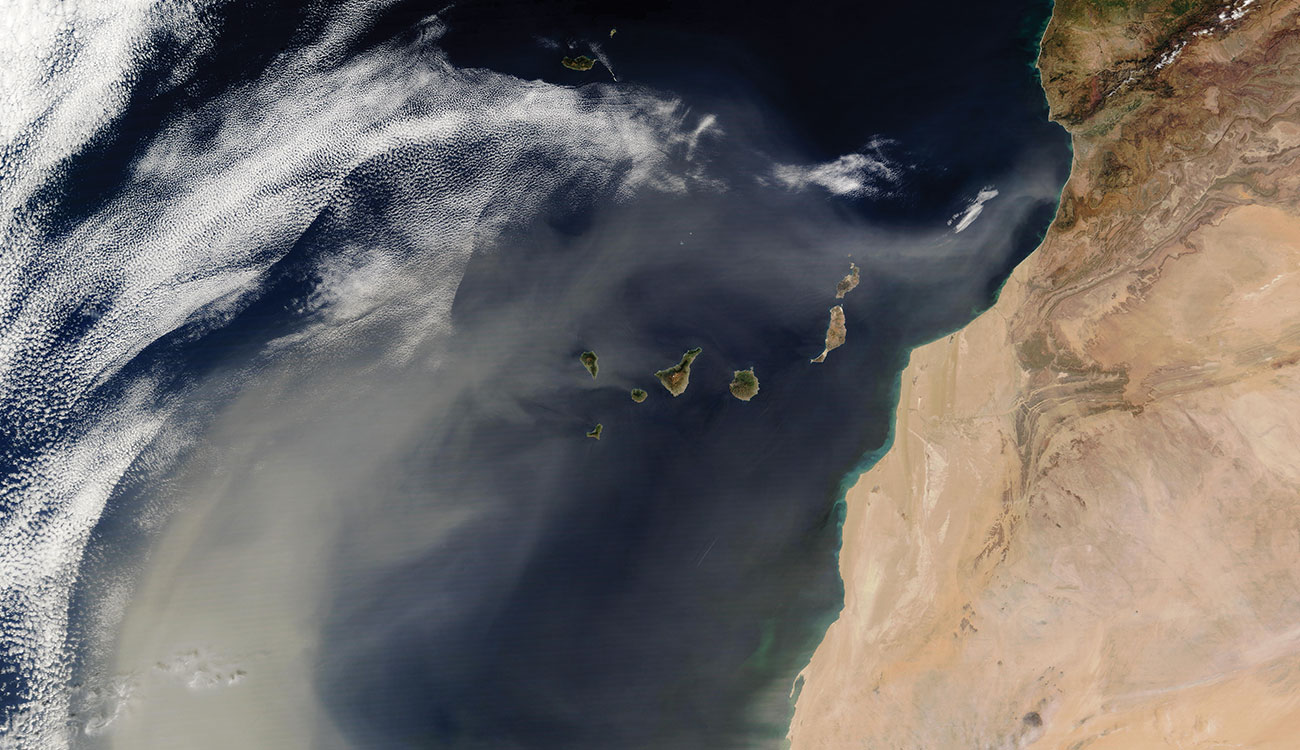Cast your eyes skyward on a summer afternoon in Miami, and you may see it—a saffron-colored haze that, save for its unusual hue, resembles a thick blanket of smog hanging in the upper atmosphere. But what looks like run-of-the-mill air pollution is actually dust that has arrived on America’s shores after an extraordinarily long journey.
It starts in the arid sands of the Sahara, where powerful storms stir the powdery soil into a thick swirling cloud of tiny particles that rocket thousands of meters into the sky before being swept out to sea by strong trade winds.
Surfing on this layer of hot, dry air, the dust travels thousands of miles across the Atlantic, raining particles down on the tropical marine waters of the Caribbean and Gulf Coast states on a trajectory that can stretch as far as the Amazon rainforest. In total, more than 180 million tons—or about 689,290 semi-trucks filled with dust—are carried past the western edge of the Sahara, according to NASA scientists, who tracked the dust particulate with satellites.
The dust, which often accumulates on parked cars and rooftops, is mostly harmless, though it can aggravate allergies and breathing problems. It can also produce extraordinarily colorful sunsets, sending tourists scrambling for their cameras.
But a recent study by UGA researchers shows that these soil-laden clouds may be more serious than we thought. In a paper published in the Proceedings of the National Academy of Sciences, they found that a genus of marine bacteria called Vibrio feed off the Saharan dust, leading to large blooms of the potentially harmful pathogen in ocean surface water.

“Part of what makes these marine bacteria potentially pathogenic is their ability to grow quickly when conditions are favorable, whether in a host or in the environment,” said study co-author Erin Lipp, a professor of environmental health science in the College of Public Health.
The genus Vibrio contains more than 30 species, and about 12 of those are pathogenic to humans. One of these species—Vibrio cholerae—causes the severe diarrheal disease cholera, which kills up to 142,000 people every year, according to the World Health Organization.
Other Vibrio species are transmitted through the consumption of raw or undercooked seafood, particularly raw oysters, causing stomachache, vomiting and diarrhea. The pathogen may also enter the body through open cuts or sores, leading to skin breakdown and ulceration.
In the U.S., Vibrio causes an estimated 80,000 illnesses and 100 deaths every year, according to the Centers for Disease Control and Prevention.
While most people will recover from the infection without serious incident, it can be particularly dangerous for people with weakened immune systems or liver disease.
“While we are interested in how the population dynamics of Vibrio might cause disease, for this study we wanted to use Vibrio’s opportunistic behavior as a model for how bacteria could exploit the availability of new nutrients and, in particular, iron delivered in dust,” Lipp said.
In the laboratory, Lipp and her colleagues took samples of iron-rich Saharan dust from Morocco and added it to natural unfiltered seawater collected off the coast of Florida. They found that Vibrio populations in the dust-seawater mixture were six times greater than control samples.
To further test their hypothesis, the research team also traveled to sites in the Florida Keys and Barbados to measure the Vibrio growth during natural Saharan dust events.
Not only did they observe that dissolved iron increases in ocean surface water as the dust arrived, but Vibrio grew from a background level of just 1 percent to almost 20 percent of the total microbial community within 24 hours of exposure.
Saharan dust events serve as a major source of iron for the world’s oceans. Iron is so important to biological production that seeding ocean regions with iron has been investigated as a way to stimulate the growth of phytoplankton, tiny plant-like organisms that form the base of the ocean’s food web and play an important role in the Earth’s climate.
Phytoplankton can act as sponges for carbon dioxide and potentially mitigate climate change by preventing the heat-trapping gas from re-entering the atmosphere. However, this concept is anchored on the premise that phytoplankton are the first responders to an influx of nutrients.
Vibrio’s ability to rapidly respond to these nutrient plumes at a potentially faster rate than microalgae short-circuits this theory, revealing that Vibrio could be important intermediaries in the biogeochemical cycling of iron, critical to many planetary processes.
“Previous studies have primarily focused on the biological response of phytoplankton and algae to Saharan dust disposition, so the role that bacteria play has largely been overlooked,” said the study’s lead author Jason Westrich, a postdoctoral research associate in the College of Public Health.
Although Westrich and Lipp did not examine health impacts in this study, they did speculate about how dust-related Vibrio blooms could affect exposure in humans.
Vibrio cases are increasing at a higher rate than many other bacterial pathogens in the U.S., which could be due in part to Vibrio bacteria populations in coastal waters expanding with rising sea surface temperatures, Lipp said.
As ocean temperatures have risen, so too have the number of Vibrio-related illnesses. For example, confirmed and reported cases of foodborne Vibrio infections increased by 116 percent in the U.S. between 1998 and 2012, according to the U.S. Global Change Research Program.
Adding to this, increased desertification in the Sahara brought on by global climate change could lead to more dust events and, therefore, more potentially harmful Vibrio blooms.
“Knowing the connection between Saharan dust and Vibrio population blooms is significant from the perspective that we are able to track these dust events using satellites in real time,” Westrich said. “This allows some predictive power to understand when there is an increased risk for Vibrio infection in humans and other marine organisms.”






